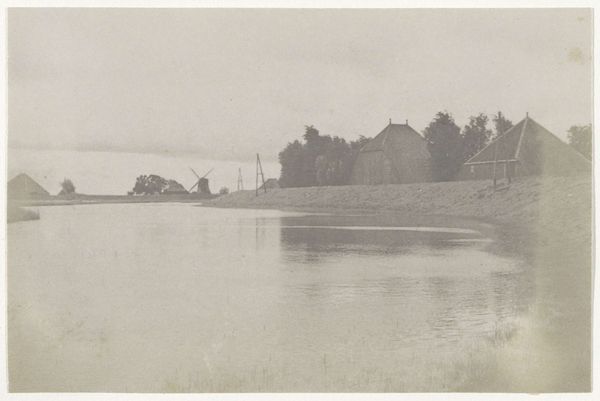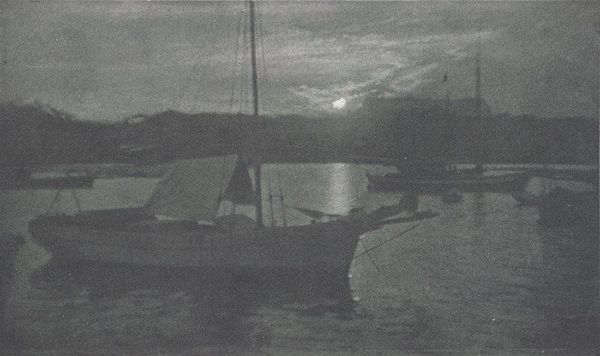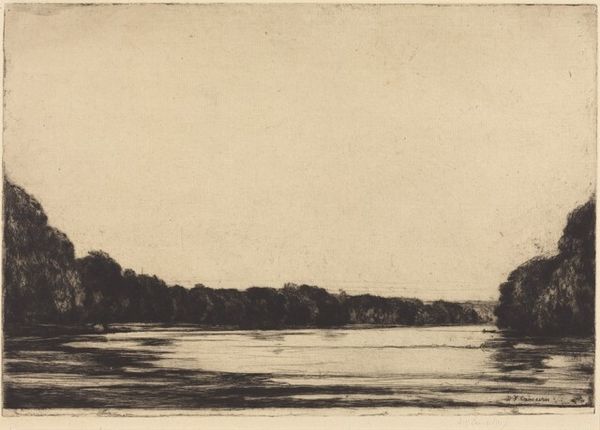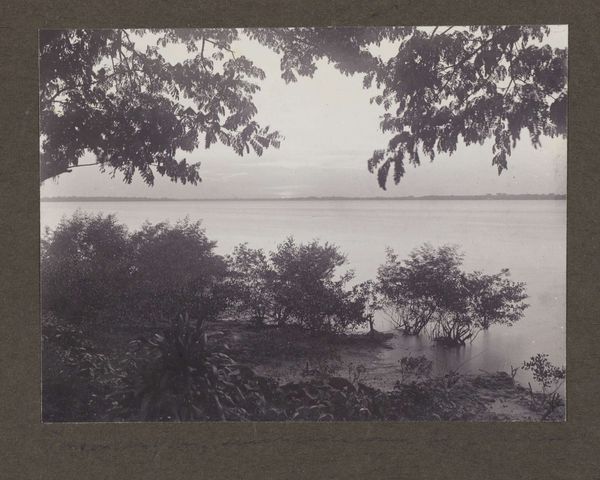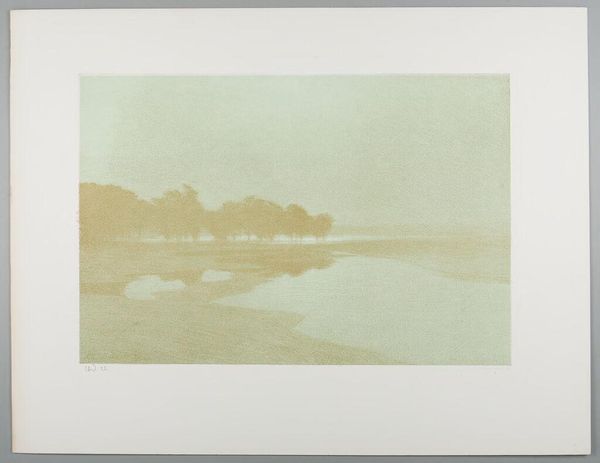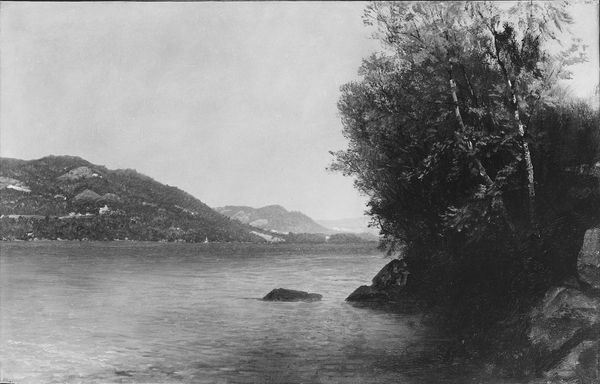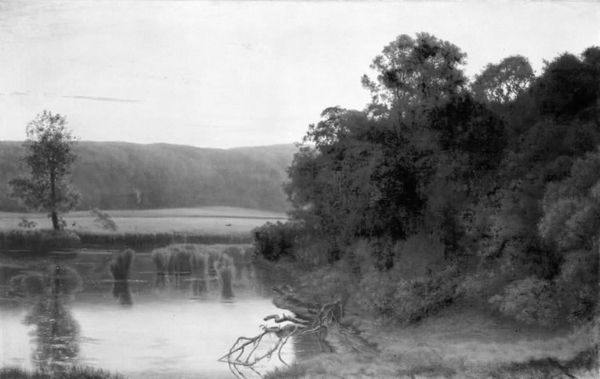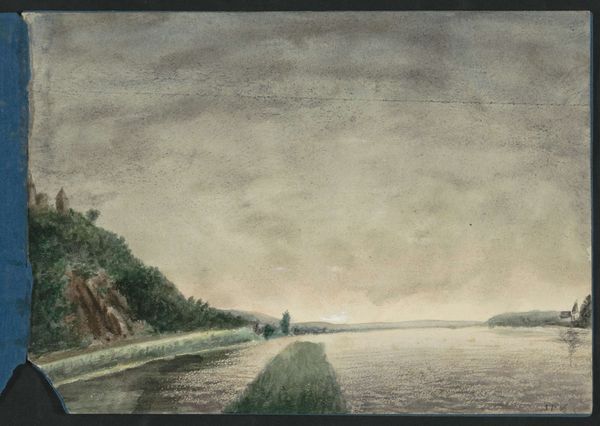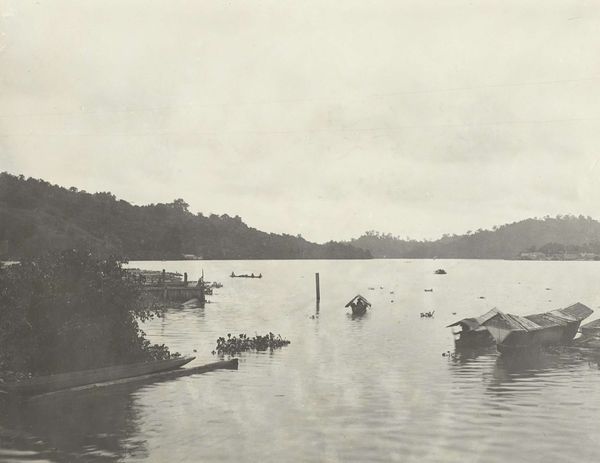
painting, watercolor
#
painting
#
impressionism
#
landscape
#
watercolor
#
water
#
monochrome
#
realism
#
sea
#
monochrome
Copyright: Winston Churchill,Fair Use
Curator: This monochrome watercolor by Winston Churchill, titled "Evening Glow at Mimizan," captures a tranquil waterside scene. Editor: It’s instantly calming, isn’t it? The simple composition, dominated by these graduated grey washes, evokes a kind of melancholy, a stillness. Curator: Churchill painted this, presumably *en plein air*, reflecting a broader cultural moment that idealized the meditative experience of immersing oneself in natural environments for wellness. We might think of Virginia Woolf doing exactly that, along the banks of the River Ouse. How does Churchill, in particular, engage with discourses around class and leisure? Editor: Well, consider the man and his pursuits: watercolor painting, an aristocratic pastime; an exercise accessible precisely due to the access he would have had to the necessary resources. But I’m more immediately drawn to the handling of the watercolor itself. It’s skillfully rendered—see the variations achieved with such a limited palette, creating atmospheric perspective. Curator: True, and the almost hazy depiction, I believe, resonates with similar sentiments about reclaiming nature that were present in contemporaneous responses to the mass production of WW1. Here is Churchill seeking quiet respite amongst the visual representation of a land far removed from trenches. We must always remind ourselves of his politics within that space. Editor: Perhaps; I’d suggest, more concretely, an appreciation for the labor involved in creating these washes and subtle tones and contrasts that describe sky and water. I also like how the horizon is more sensed than seen, which brings all focus to that darker bank of the painting and water itself, blurring where those two aspects even separate in the picture plane. Curator: I concur. The monochrome palette amplifies that blurring effect, but can also flatten space in ways that seem naive and perhaps at odds with someone known for strategic thinking. In a way, this piece reminds us of art's capacity to be both an exercise in, and an escape from, complex, power structures. Editor: And ultimately an escape into the mastery of a physical material, in this case watercolor. I am drawn to consider its specific challenges. It all speaks to different facets of one, very famous, figure. Curator: Indeed, it complicates him and allows us to view him as part of this wider cultural discussion on the horrors of progress. Editor: Exactly, this close look offers much food for thought about environment, material practice, and the relationship between making and being.
Comments
No comments
Be the first to comment and join the conversation on the ultimate creative platform.



